JPhys Materials特刊精选|聚焦女性学者在量子材料中的研究

特刊详情
客座编辑
- Leni Bascones,西班牙马德里材料科学研究所
- Hae-Young Kee, 加拿大多伦多大学
- Maia Vergniory, 德国马克斯普朗克固体化学物理研究所
主题范围
Recent developments have boosted the field of quantum materials making it one of the hottest topics in condensed matter physics. Quantum materials show a plethora of emerging quantum phenomena and can lead to cutting edge technologies, from quantum computers to racetrack memories or sensors. It is now possible to design and engineer heterostructures with specific properties, sometimes not present in naturally found materials, allowing the community to detect unprecedented effects and driving the development of new ideas. This focus issue will cover recent developments and challenges in the field of quantum materials, including but not limited to:
- Strongly correlated electron materials: unconventional superconductors, heavy fermion materials, Mott insulators, frustrated magnets, etc
- Topological materials
- 2D materials, van der Waals and moiré heterostructures
- Other novel superconductors
- Multiferroic materials
- Heterostructures and devices for quantum computation or to detect Majorana fermions
This focus issue aims to highlight the work of a selection of women investigators at different stages of their independent career; not only to recognize their excellent contribution to science, but also to show to the next generation of women scientists that there are a multitude of female role models out there. This issue will form part of a greater series of focus issues that highlight the excellent scientific contribution that women scientists continue to make in all areas of advanced materials and provide a list of highly respected women researchers that could be used for invited talks, panel discussions, editorial board members and more.
The issue will be made up primarily of original research papers, although we will also consider review articles and shorter perspective pieces.
作者及文章介绍
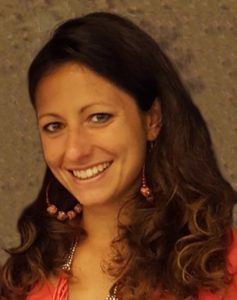
Martina Meinero
- Martina Meinero received her PhD in physics in 2019 from the University of Genova, Italy. She then went on as a Postdoctoral Fellow at the University of Genova (2019-2022) in the research group of Prof. Marina Putti. Her research is focussed on the study of unconventional superconductivity from cuprates to iron based superconductors by means of electrical, thermal and thermoelectric properties measurements.
M Meinero et al 2023 J. Phys. Mater. 6 014005
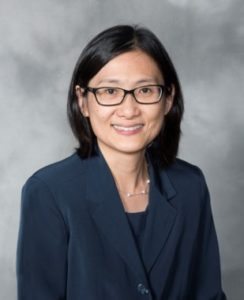
Julia Chan
- Julia Chan received her BSc in Chemistry from Baylor University and a PhD in Chemistry at University of California at Davis in 1998. She was a National Research Council Postdoctoral Fellow at the National Institute of Standards of Technology. In 2022, she was recruited to Baylor University where she is the Fenn Family Chair in Materials Science at the Department of Chemistry & Biochemistry. Her research team is at the interface of chemistry and physics, and is focused on crystal growth of highly correlated quantum materials. She is a AAAS Fellow and currently serving as Deputy Editor for Science Advances.
Anisotropic magnetic and transport properties of orthorhombic o-Pr2Co3Ge5
Trent M Kyrk et al 2022 J. Phys. Mater. 5 044007
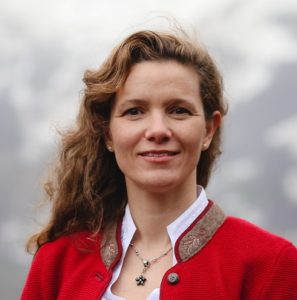
Yanina Fasano
- Yanina Fasano has received her PhD in Physics from the Instituto Balseiro at Patagonia, Argentina, in 2003. After a postdoctoral appointment at the University of Geneva, Switzerland, she joined the Low Temperatures Lab at the Centro Atómico Bariloche of the Atomic National Commission as a permanent researcher of Conicet. In 2021 she became assistant professor at the Instituto Balseiro. Her research is in the field of experimental condensed matter at low temperatures, focusing on superconductivity and vortex matter. She received the Houssay prize of the Ministry of Science, Technology and Innovation of Argentina in 2022 and was honored with the Georg Forster Research Prize from the Alexander von Humboldt Foundation in 2021.
Impact of atomic defects in the electronic states of FeSe1-xSx superconducting crystals
Jazmín Aragón Sánchez et al 2022 J. Phys. Mater. 5 044008
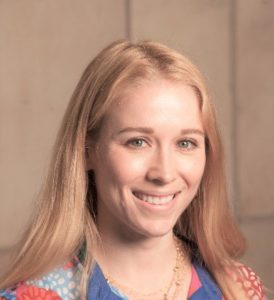
Inna Vishik
- Inna Vishik received her BS in Physics and MS in Materials Science and Engineering from Stanford University in 2006, and a PhD in Applied Physics from Stanford University in 2013. She was a Pappalardo Postdoctoral Fellow at the Massachusetts Institute of Technology 2013-2016. Inna joined the department of Physics and Astronomy at University of California, Davis in 2016 and was tenured in 2021. The Vishik lab studies emergent electronic phenomena in quantum materials, including correlated electron systems, 2D materials, topological materials, and unconventional superconductors using angle-resolved photoemission spectroscopy, x-ray photoelectron spectroscopy, and ultrafast optics.
Copper migration and surface oxidation of CuxBi2Se3 in ambient pressure environments
Adam L Gross et al 2022 J. Phys. Mater. 5 044005

Leslie Schoop
- Leslie Schoop received her Diploma in Chemistry from Johannes Gutenberg University (2010) and PhD in Chemistry from Princeton University (2015). She then went on to work as a Minerva fast-track fellow at the Max Planck Institute for Solid State Research (2015-2017). Leslie joined the Princeton University Department of Chemistry Faculty in 2017 and was tenured in 2022. The Schoop Lab is working at the interface of chemistry and physics, using chemical principles to find new materials with exotic physical properties.
Chemically exfoliated nanosheets of β-Bi2O3
Brianna L Hoff et al 2022 J. Phys. Mater. 5 044004
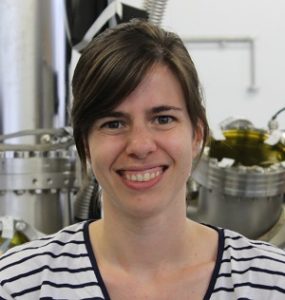
Manuela Garnica
- Manuela Garnica obtained her PhD in Physics from the Universidad Aut?noma de Madrid in 2013. After a brief postdoc in Madrid, she moved to Germany in 2014 at the Technical University of Munich. In February 2018, she started an independent research line at IMDEA Nanoscience Institute in Madrid. Her research interests deal with 2D materials and new topological states of matter studied by means of scanning probe microscopies.
Atomic-scale study of type-II Dirac semimetal PtTe2 surface
Pablo Casado Aguilar et al 2022 J. Phys. Mater. 5 044003

Paula Mellado
- Paula Mellado obtained her PhD in Physics from Johns Hopkins University in 2010. After her postdoc at Harvard University, she became an assistant professor at the Faculty of Engineering and Sciences at Universidad Adolfo Ibañez in Chile, where she became a full professor in 2021. Her research is in the broad area of condensed matter physics.
Topological edge states in dipolar zig-zag stripes
Paula Mellado 2022 J. Phys. Mater. 5 034007
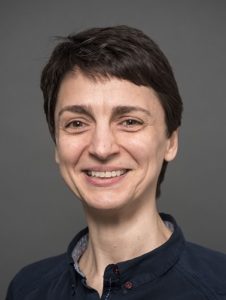
Mona Berciu
- Mona Berciu received her PhD in physics from University of Toronto in 1999. After a postdoctoral appointment at Princeton University, she joined the Department of Physics and Astronomy at the University of British Columbia in 2002, becoming a professor in 2012. She is a Fellow of APS since 2019, and a founding member of the Stewart Blusson Quantum Matter Institute. Her current research interests focus on developing accurate variational approximations for answering key questions that arise in the study of strongly correlated systems, namely what are the characteristics of the quasiparticle that forms when a charge carrier becomes ‘dressed’ by a cloud of excitations such as phonons, magnons, etc. What effective interactions arise between such quasiparticles through exchange of excitations between their clouds, and what is their combined influence on the properties of the host material?
M Berciu 2022 J. Phys. Mater. 5 044002
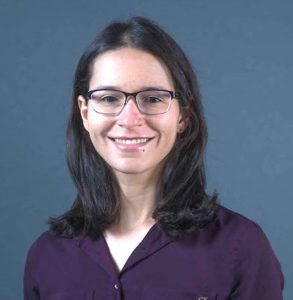
Priscila Rosa
- Priscila Rosa received her PhD in Physics in 2013 from the University of Campinas, Brazil. After a postdoctoral appointment at the University of California at Irvine, she joined Los Alamos National Laboratory (LANL) as a Director’s Postdoctoral Fellow in 2015 before becoming a Staff Scientist in 2016. Her main research interest is the synthesis and characterization of strongly correlated quantum materials that exhibit emergent phenomena, such as unconventional superconductivity, electronic nematicity, complex magnetism, and non-trivial topology. Priscila Rosa has coauthored over 110 peer-reviewed articles, one patent, and two book chapters. She has also presented 40+ invited talks in national and international conferences. At Los Alamos, her research further focuses on the application of extreme conditions (high pressure, high magnetic field, and low temperatures) to tune novel materials towards desired functionality.
Investigating the limits of superconductivity in UTe2
A Weiland et al 2022 J. Phys. Mater. 5 044001

Lilia M Woods
- Lilia M Woods has obtained her PhD in condensed matter theory from the University of Tennessee under the supervision of Prof. Gerald D Mahan. After her postdoc at Oak Ridge National Laboratory and her NRC Fellowship at the Naval Research Laboratory, she became an assistant professor at the USF Department of Physics, where she became a full professor in 2012. Her research is in the broad area of theoretical and computational condensed matter physics funded by the US National Science Foundation and Department of Energy. She is an APS fellow and AAAS fellow. She has also received the Humboldt Research Award by the AvH Foundation.
Dispersive interactions between standard and Dirac materials and the role of dimensionality
Dai-Nam Le et al 2022 J. Phys. Mater. 5 034001
期刊介绍
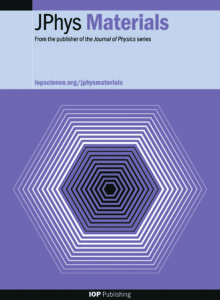
JPhys Materials(JPMATER)是一本新出版的开放获取期刊,涵盖材料研究中最重要和最激动人心的进展,着重关注跨学科和多学科研究,包括:生物和生物医学材料;碳材料;电子材料;能源和环境材料;玻璃和非晶态材料;磁性材料;金属和合金;超材料;纳米;有机材料;光子材料;聚合物和有机化合物;半导体;智能材料;软物质;超导体;表面、界面和薄膜等。
